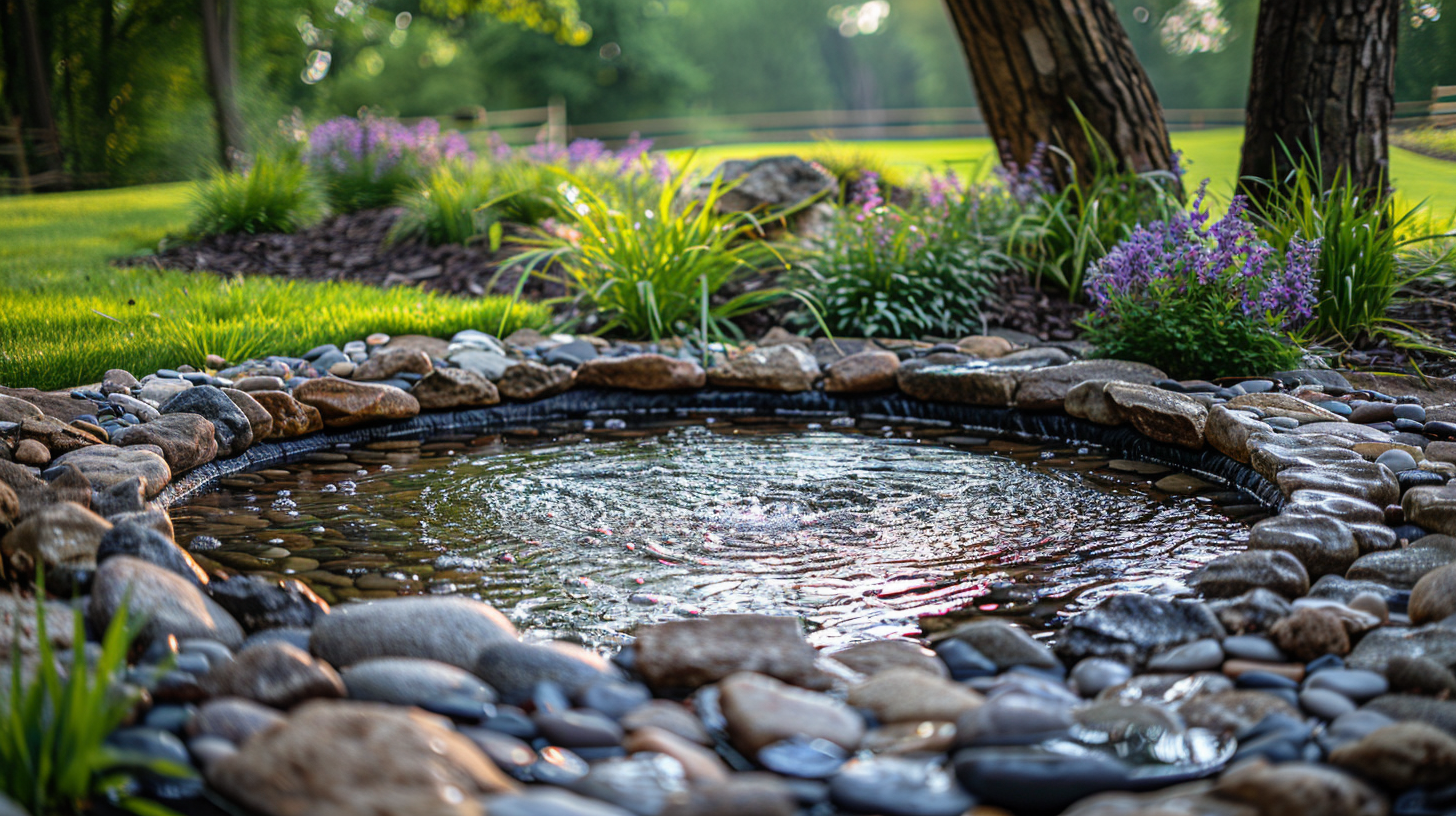Key points
• Pick the Right Plants: Choose plants with shallow roots like grasses, flowers that come back each year, and ones you need to replant every year. Trees and bushes have deep roots that could break your septic tank and pipes. The right plants will cover the drain field without causing problems.
• Easy to Get To and Safe: Make sure you can get to your septic tank lids without a problem for when they need work done. Put things like flat stones or thin paving tiles to show where it is but don’t put down anything heavy that can block the way or hurt the tank.
• Stop Soil from Washing Away: Use plants that cover the ground, wood chips, and make sure the ground slopes the right way to stop the soil from disappearing over where your septic system is. This helps keep the soil in place and stops your septic system from getting damaged.
Contents
- 1 Key points
- 2 Caring for Your Septic System with the Right Landscaping
- 3 Blending Practicality with Good Looks
- 4 Checking Out Where Your Septic System Is and What It’s Made Of
- 5 Zoning and Legal Considerations
- 6 Soil and Drainage Analysis
- 7 Selecting Compatible Plants
- 8 Getting Along With Nature
- 9 Balance Between Plant Root Systems and Septic Functionality
- 10 Color and Texture Considerations
- 11 Planning for Every Season
- 12 Handling Plant Growth and Root Invasion
- 13 Soil Health and Fertilization Practices
- 14 Watering Tips for Septic Field Gardens
- 15 Frequently Asked Questions (FAQ)
Caring for Your Septic System with the Right Landscaping
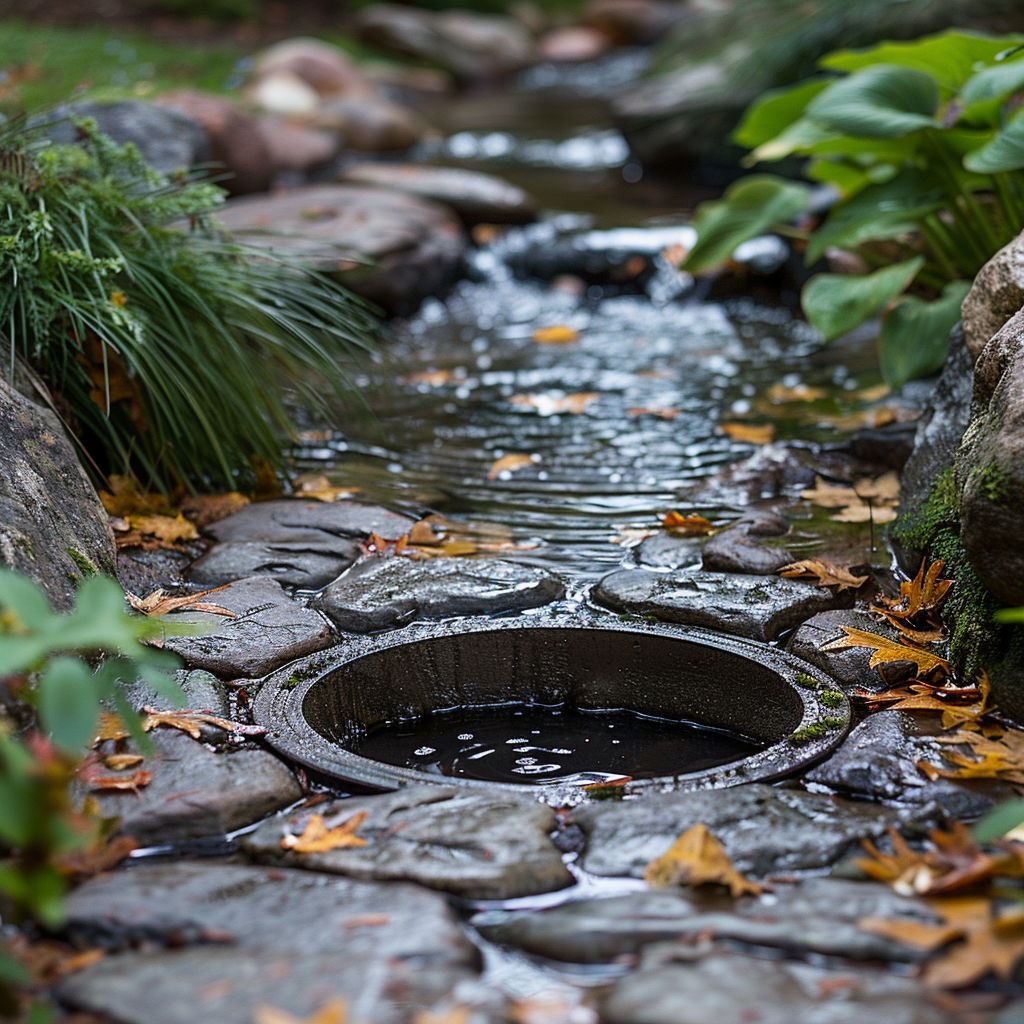
It’s crucial to keep your septic system in good shape, and picking the right plants can help. Steer clear of ones with deep roots that might mess with your pipes. Go for grass or plants that don’t root deeply. This helps stop erosion and is good for nutrient absorption.
Blending Practicality with Good Looks
Your outdoor space can serve dual purposes above the septic tank: it can function well and look good. Choosing the right plants can protect your septic system from harm while making your yard more attractive. Also, smart landscape planning makes regular upkeep tasks like pumping easier.
It’s important to balance how things look with how they work around your septic tank. In the early stages, you should aim for a design that not only adds to your property’s visual appeal but also keeps your septic system running smoothly. Start with a detailed plan showing where everything will go. Taking this step first helps you create a layout that’s both practical and pleasing to the eye.
Checking Out Where Your Septic System Is and What It’s Made Of
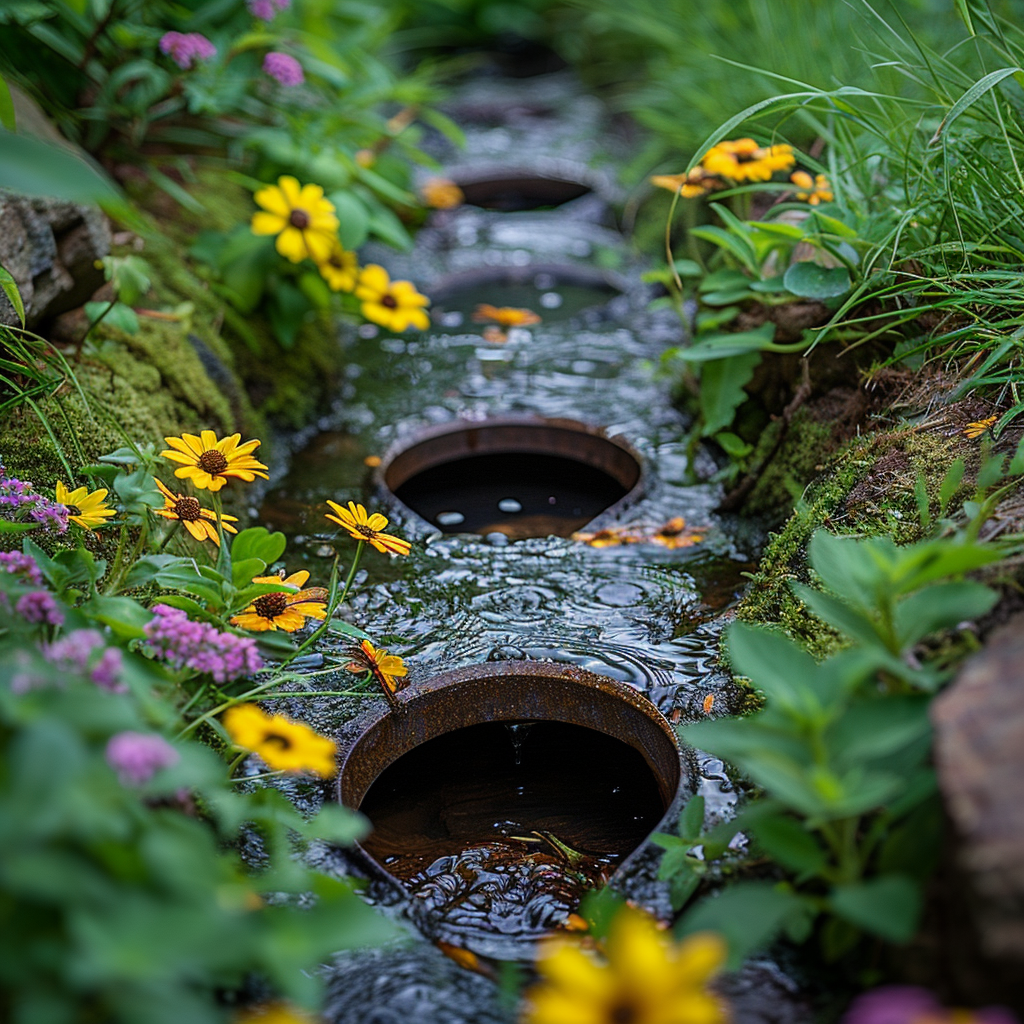
Knowing exactly where your septic system parts are – like the tank, drain field, and pipes – is super important before you start shoveling or planting stuff. Make sure you keep track of what’s where so you don’t mess things up later. This will really help you sidestep problems down the road.
Zoning and Legal Considerations
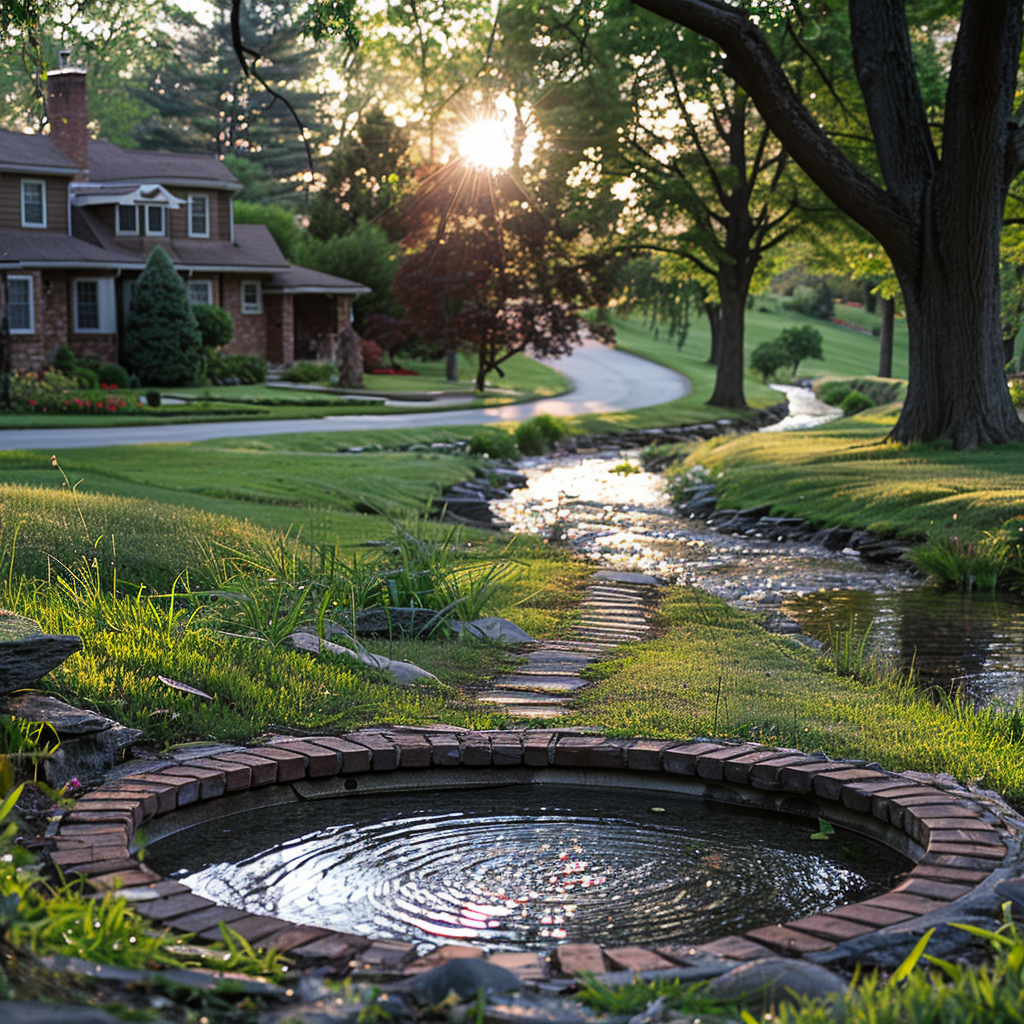
Before you get started on changing your yard, it’s a good idea to touch base with your local zoning office. You could find there are specific rules for landscaping around a septic tank that you have to follow. Plus, you should check out easements or property boundaries since they might impact what you can do.
Soil and Drainage Analysis
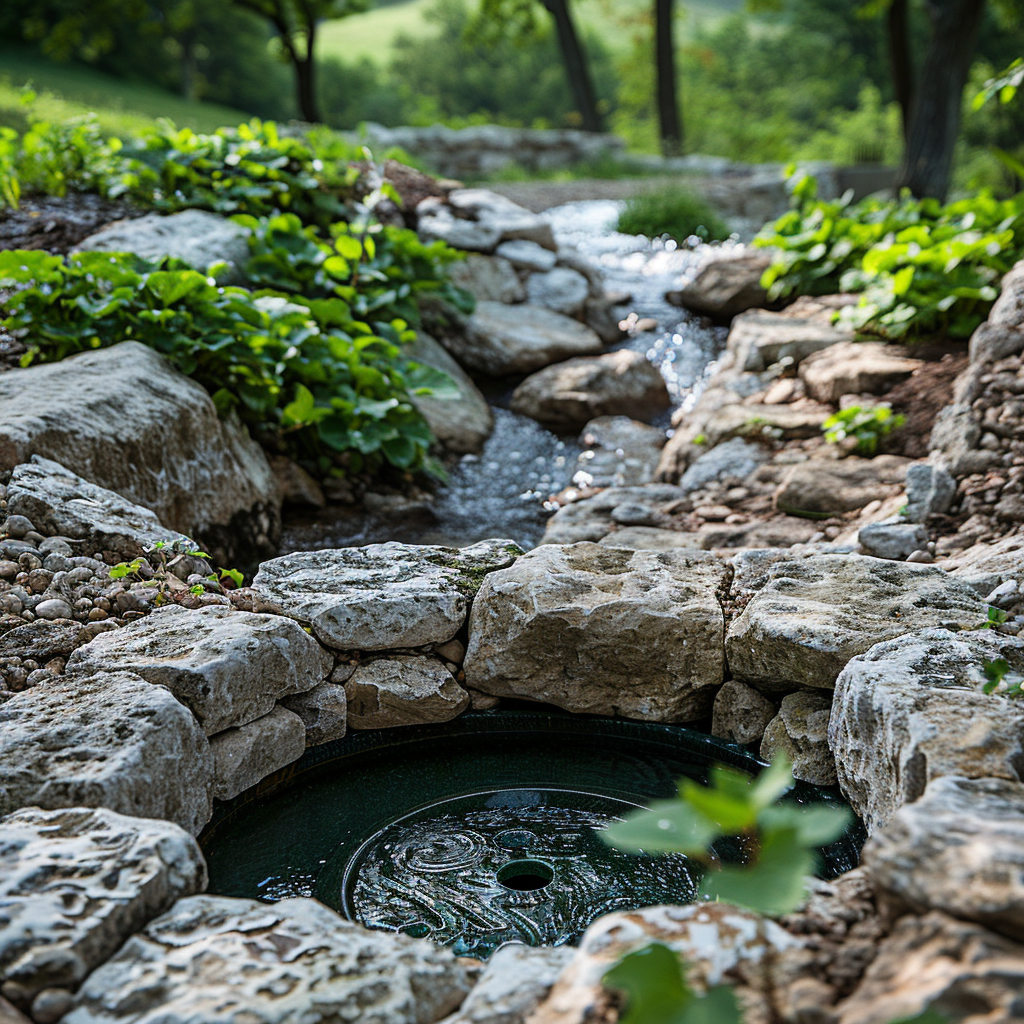
Understanding the soil and how water flows in your garden is key for your landscaping projects. Soil that lets water pass through easily is best around septic areas, because soil that stays soggy could mess with how the system works. A detailed check can tell you if your soil is good to go or if you need to step up the drainage.
Selecting Compatible Plants
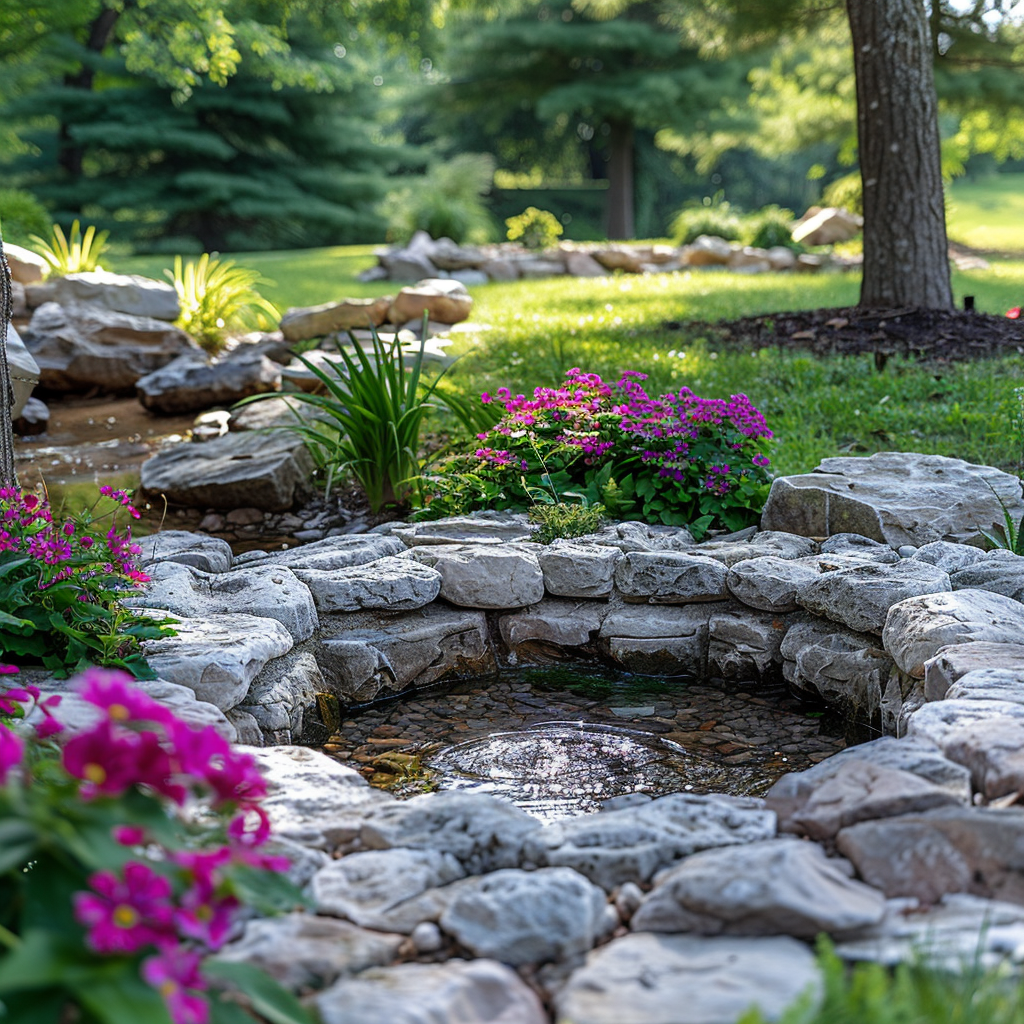
Picking the suitable plants to grow around your septic system is important. Go for ones with shallow roots that won’t grow too wildly because deep-rooted trees and bushes might hurt the parts buried underground. Plants that cover the ground and last for many seasons are usually a good choice; however, it’s better to steer clear of veggies to keep them away from sewage.
Getting Along With Nature
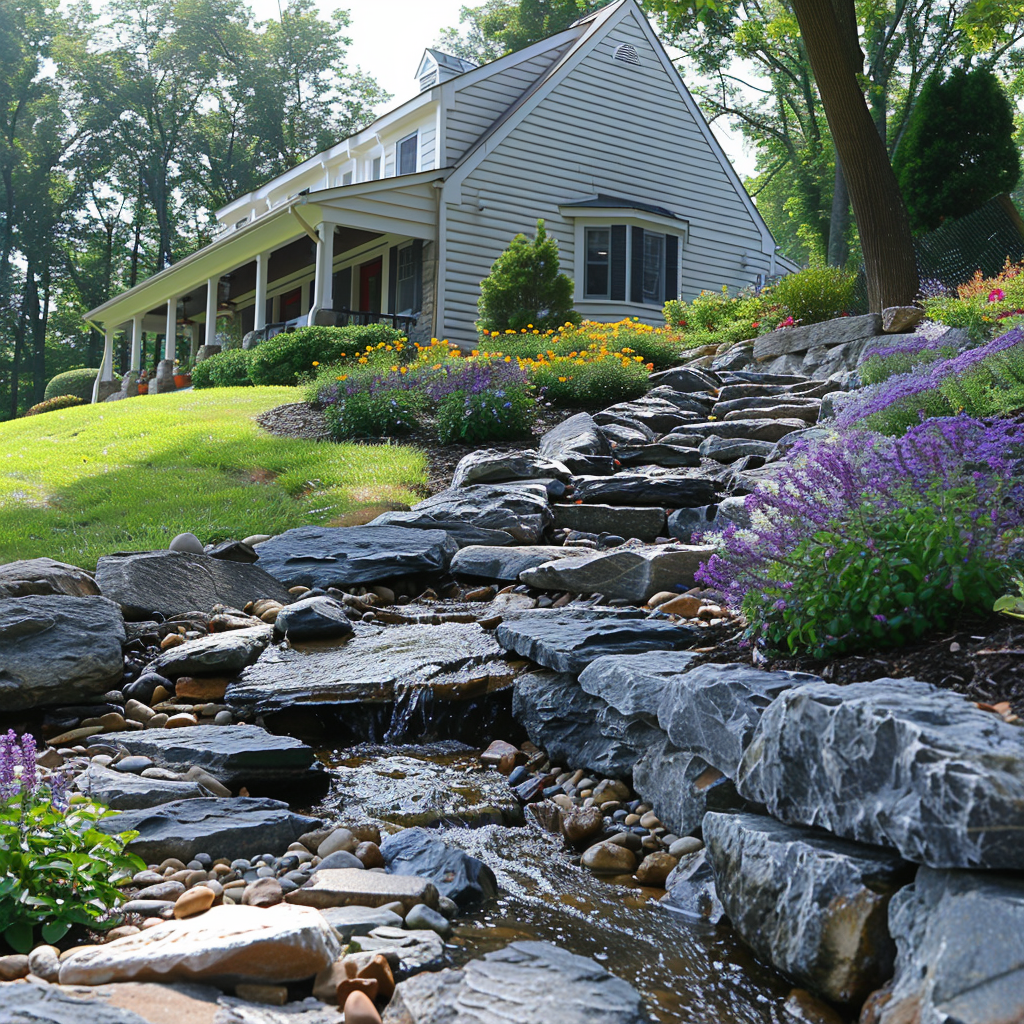
It’s important to make sure your septic tank fits in with the area around it to keep a nice looking yard. This means you need to look at the natural shape of the land, what plants are already growing there, and what the overall look of the place is like. Choose plants and design pieces that look like they belong there. Using local plants, or ones that are similar to what grows naturally in your region, can do the trick.
Balance Between Plant Root Systems and Septic Functionality
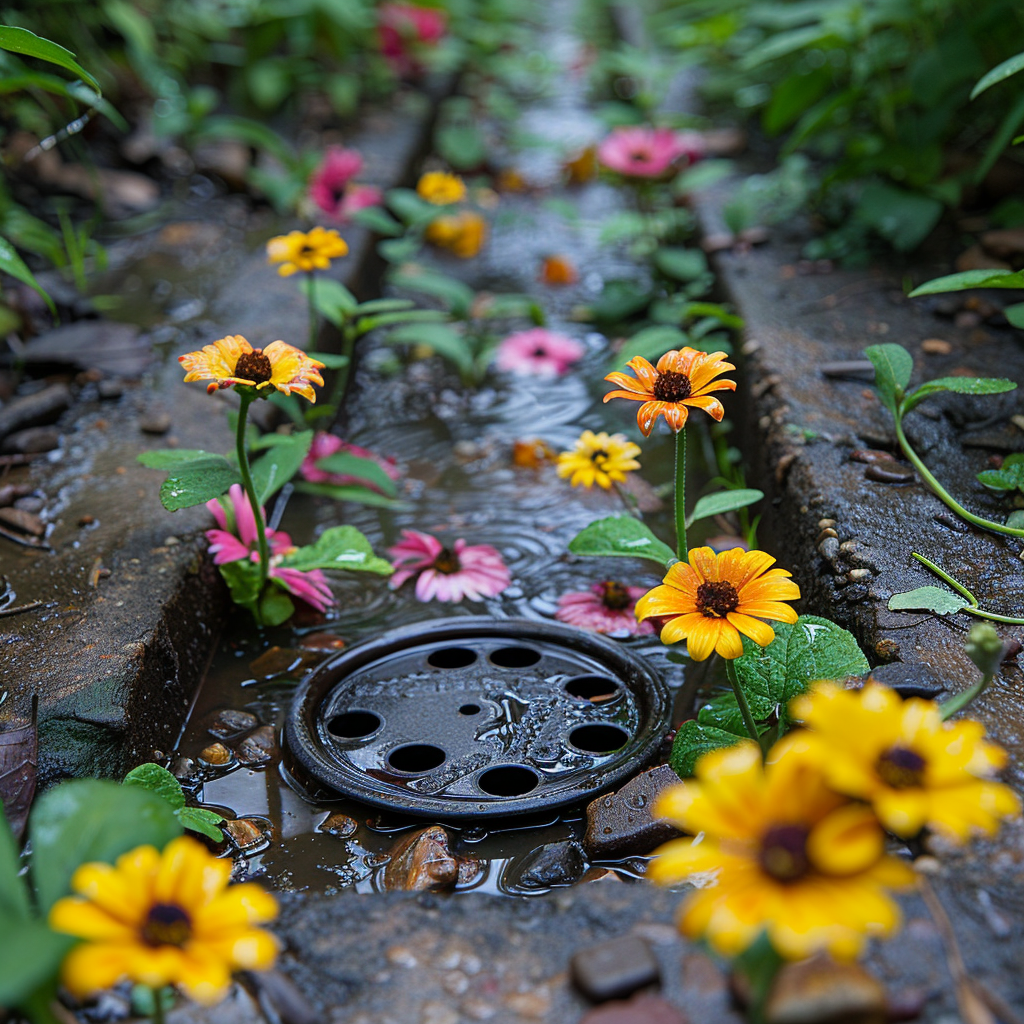
Maintaining a good balance is essential when it comes to planting around your septic system. You’ve got to make sure that trees and shrubs with deep roots aren’t too close to your drain field; they could grow right into it and screw things up. Choose plants that have shallower roots. These guys won’t mess with the parts of your septic system buried underground.
Color and Texture Considerations

Picking out colors and textures for your plants really changes how your septic tank area looks. Mix different colors and textures to make things pop but don’t go overboard. Throw in some leaves that look different than the usual green to make your yard look fuller.
Planning for Every Season
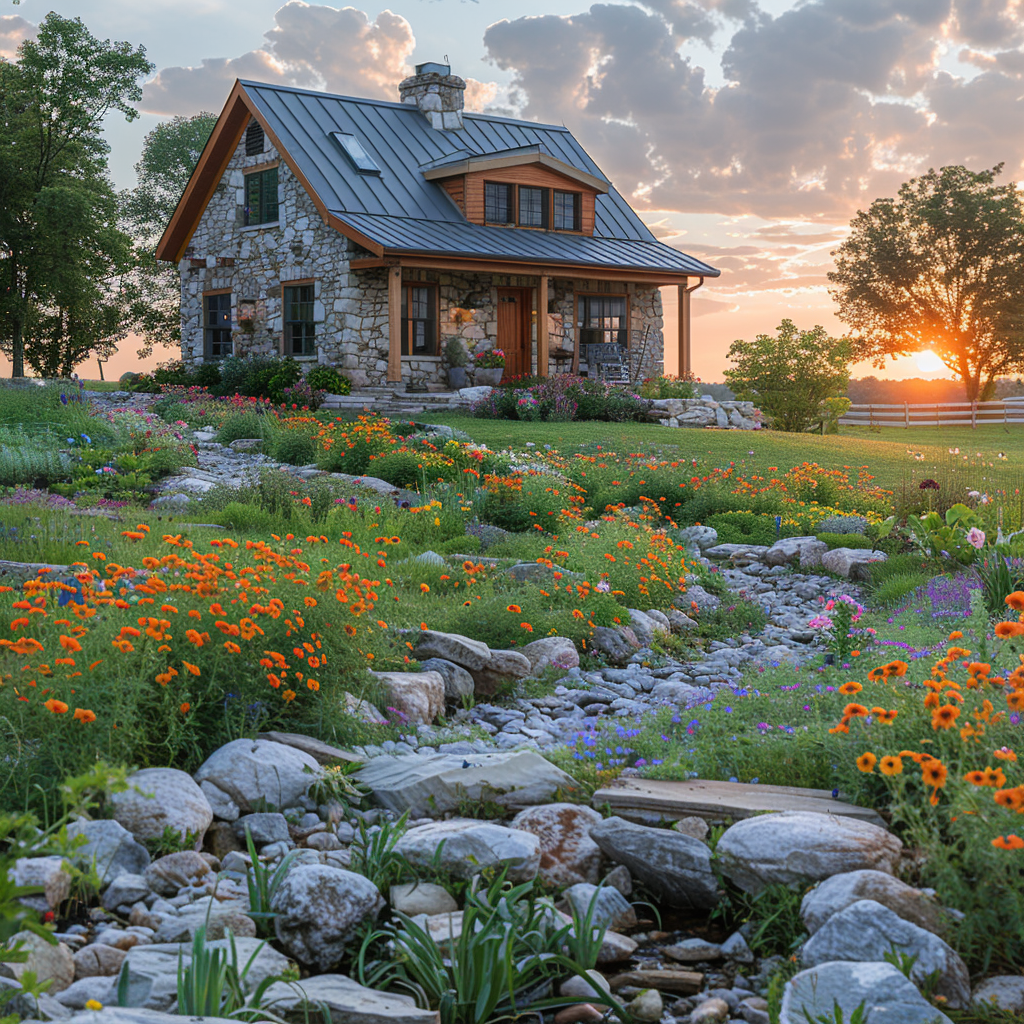
To keep your septic tank area looking good all year, plan carefully. Pick plants that bloom at different times so there’s always something at its best. Mix in evergreens with annuals and perennials that shine in different seasons.
Choosing the right plants is key, especially around septic tanks. Avoid plants with deep roots because they can ruin your tank or its pipes. Instead, go for those with shallow roots to stay safe.
Drought-resistant plants are smart — they don’t need much water. That means you won’t have to water them a ton and risk harming your septic system with too much moisture. Also, pick plants that won’t spread their roots where they don’t belong. Skip large trees, big shrubs, and some perennials with big root systems near your septic tank.
Shallow vs. Deep Roots
Near your septic system, it’s safer to plant things with shallow roots. Herbs, grasses, and ground covers have short roots that won’t mess with your system and will still make your garden look great.
Plants That Don’t Need Much Water
Go for plants that can handle not being watered all the time. Succulents, lavender, and decorative grasses don’t need much water and won’t burden your septic system.
Picking Safe Plants
Choose plants that won’t invade your septic system territory. These types keep to themselves, making it easier to look after them and keeping your system safe from harm.
Steer Clear of These Plants
Avoid certain plants near your septic system for sure. Trees like willows or big oaks have huge roots that could wreck everything. The same goes for big shrubs and perennials that grow fast and love water – they’re bad news for your tank.
Remember, when you’re making your garden plans around the septic tank, think about how it looks and works. With smart design, you can have a space that looks nice and gets along with your septic system.
Grass That Looks Good
One simple trick is to use the right kind of grass. Good-looking grass hides your septic area well and stops the soil from wearing away. Pick kinds of grass that are tough, need little care, and won’t get in the way of your tank doing its job.
Add Rocks and Mulch
Rocks and mulch can add protection to your septic field and bring something extra to how it looks. Just don’t lay them on too thick so you can still get to the system if you need to, and it doesn’t press down on the soil underneath too hard. They also help keep moisture in when it’s hot and dry outside.
Borders and Raised Beds
If you want to spruce up your yard and draw attention away from the septic parts, try raised beds or borders. They look nice and can be filled with different plants or blooms – just avoid plants with deep roots. Make sure these don’t block access to your tank either.
Walkways and Steps
Pathways and stepping stones can be really handy and add a nice touch. Put them in places that steer clear of the septic area but also let people come through if they need to work on it. You can make them out of lots of materials like gravel, pavers, or stone to join up with the style of your garden.
Handling Plant Growth and Root Invasion
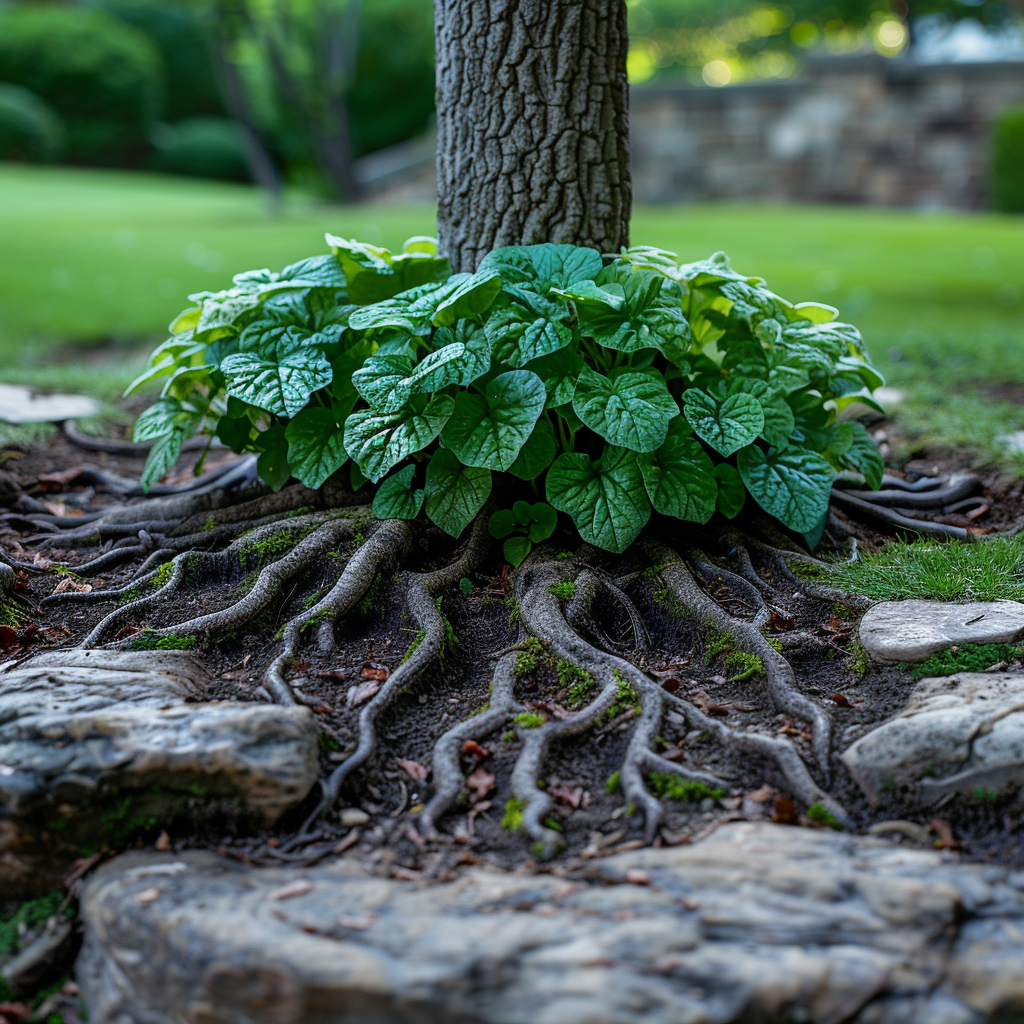
Picking the right plants near your septic zone is key to stopping roots from messing things up. It’s best to choose plants with short roots, such as decorative grasses or perennials. These are safer than trees that have long roots which could wreck your septic setup. When you’re planting, think about spacing—make sure there’s enough room between the flora and the drainage area to cut down on the chances of roots creeping in.
Soil Health and Fertilization Practices
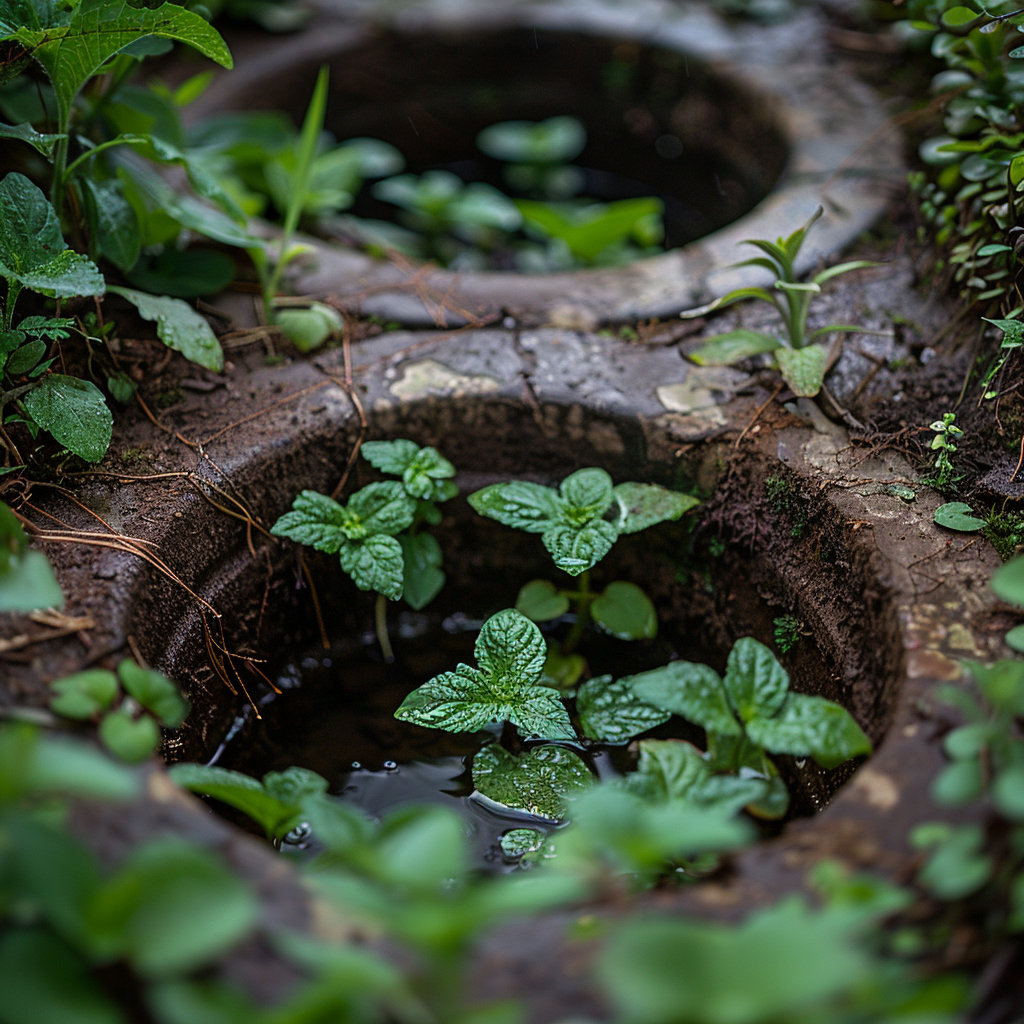
Good soil is key for a septic area that works well. Always check the soil’s nutrients and acid balance—that helps plants grow with no need for extra feeding. When you have to fertilize; go for natural options. Use them lightly so you don’t risk polluting the water underground.
Watering Tips for Septic Field Gardens
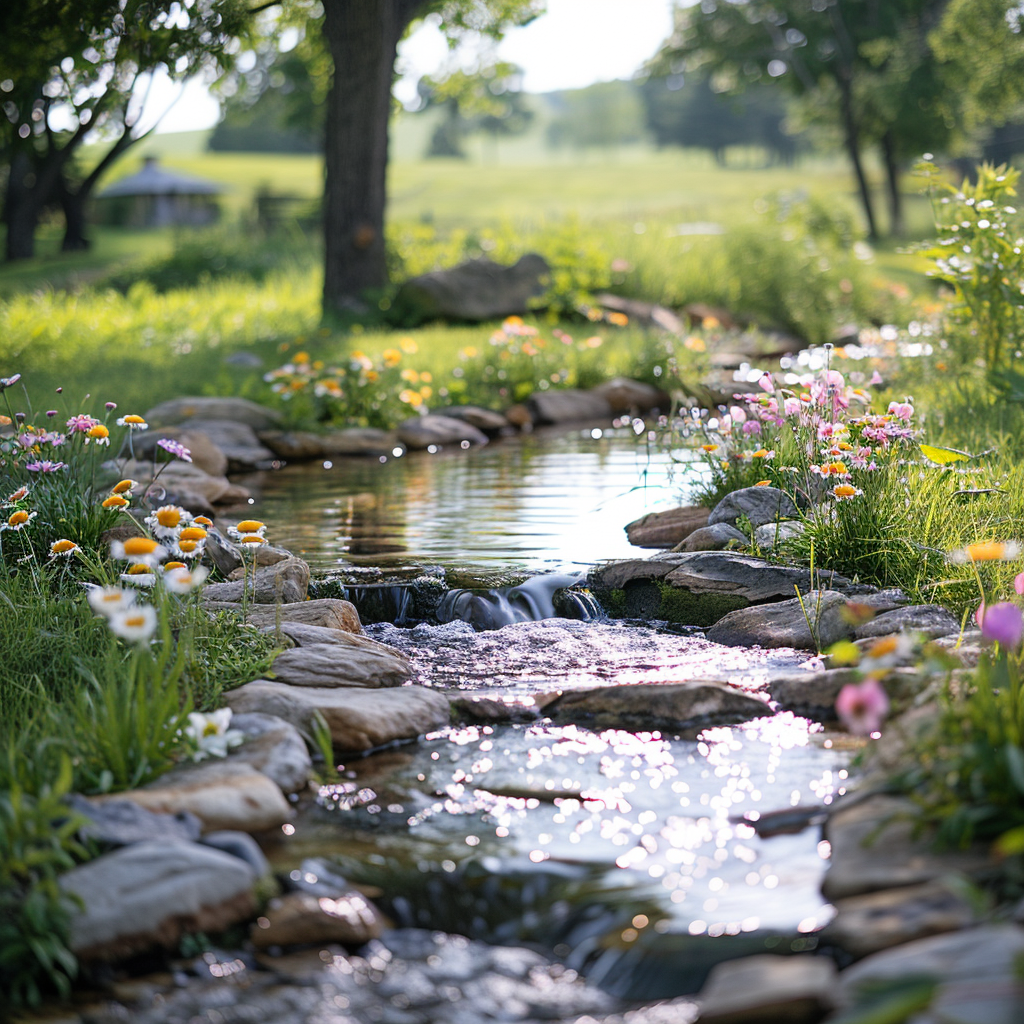
When you water plants around your septic area, it’s key to go for the middle ground—too much water’s a no-no. Giving these systems more than they can handle messes up how they clean waste water. So, stick with drip irrigation that gets the water right where it’s needed or pick plants that don’t get thirsty often. This helps save water and keeps your septic system from getting overloaded.
Frequently Asked Questions (FAQ)
What are some creative ways to disguise septic tank covers?
One can use decorative elements like faux rocks, small garden statues, or a bird bath positioned over the cover. Ensure these decorations are light enough to remove easily when access is needed.
Can I plant trees near my septic drain field?
It’s not advisable to plant trees close to your drain field due to their invasive roots, which can damage the pipes and septic system. Consider planting grasses or shallow-rooted plants instead.
Are there specific grasses recommended for septic drain field areas?
Yes, turf grasses and meadow grasses are typically chosen for drain fields because they prevent erosion without deep roots that could harm the system.
How can I achieve an aesthetic lawn decoration around my septic tank without causing problems?
Opt for portable lawn decorations that don’t interfere with the ground or the tank’s maintenance needs, like movable benches or potted plants.
What considerations should I keep in mind while landscaping over my septic tank and its components?
Consider factors like root depth, ease of access for Septic Maintenance, and ensuring that any added weight doesn’t compact the soil over the septic system.
Is there an eco-friendly septic tank cover that blends in with my yard environment?
Eco-friendly septic tank disguises include mulch covers or low-profile green covers that allow for air circulation and blend seamlessly with the lawn.
How can shade affect my septic field and what landscaping ideas are appropriate?
Shade can limit evaporation which helps dry out the drain field; hence, choose shade-tolerant plants that don’t require deep watering.
Could adding mulch be beneficial around my septic drainfield area?
Yes, a layer of mulch can help with moisture retention and temperature control in the drainfield area without affecting the underlying system.
Why is it important to avoid excessive foot traffic over the septic system landscape?
Excessive foot traffic can compact the soil and disrupt the efficient functioning of the septic system; pathways or stepping stones can help minimize this.
What type of lawn edging is suitable for delineating the space around my septic system while keeping it accessible?
Use flexible, lightweight materials for edging that offer an aesthetic edge to your landscape but can be easily moved or adjusted during septic system maintenance.

I’m Tim Robberts, a seasoned wastewater treatment & septic system expert with over 40 years of experience in the field. My career began as a septic tank installer, and I quickly gained a reputation for my attention to detail and commitment to excellence. Over the years, I’ve honed my skills in designing, installing, and maintaining septic systems for residential and commercial properties.
